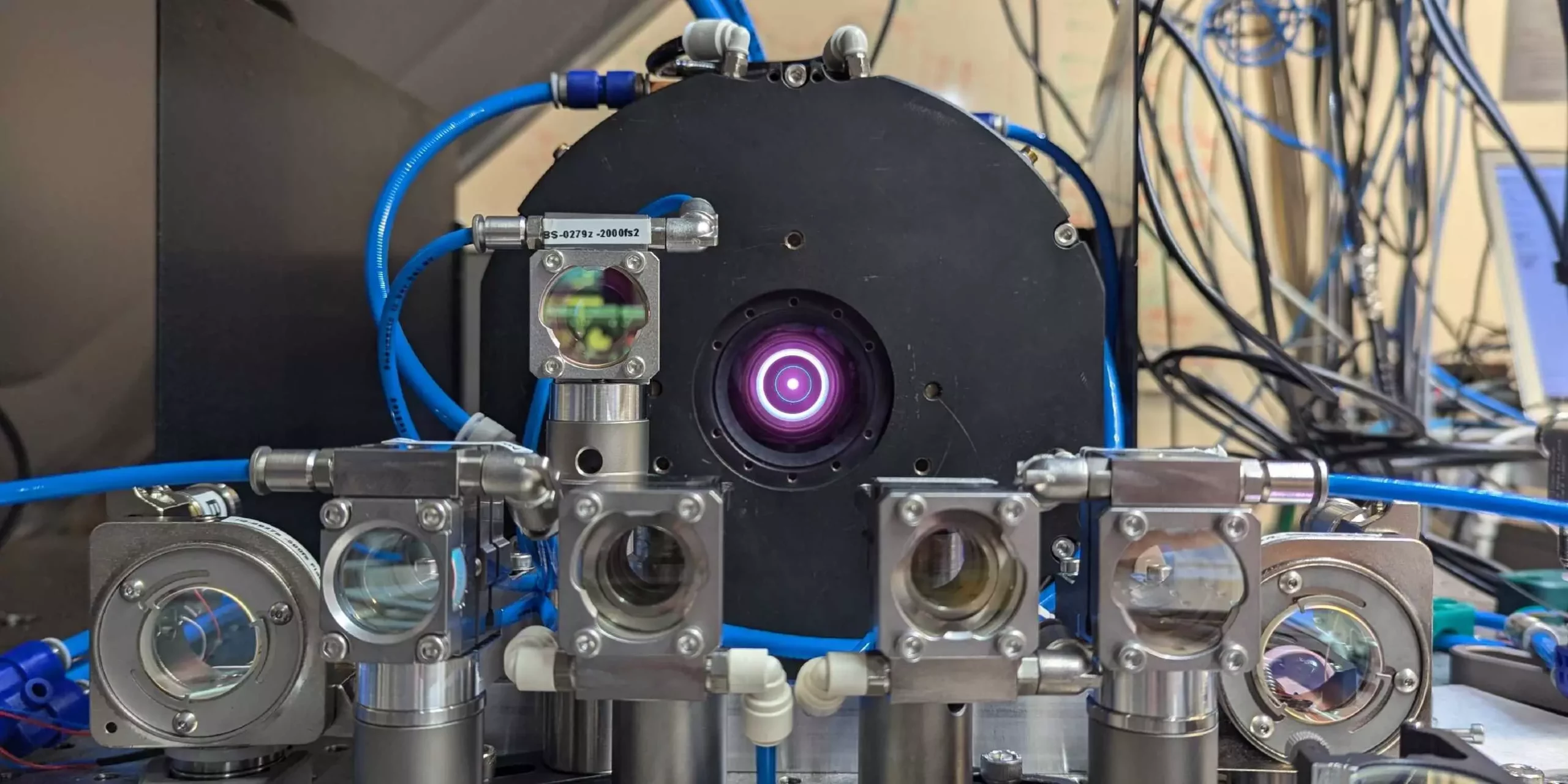In the ever-evolving domain of photonics, advances in laser technology are pivotal in numerous scientific and industrial applications. Most commonly, lasers conjure images of constant, intense beams of light utilized for cutting, welding, and even medical procedures. However, a more nuanced and fascinating mechanism has emerged from the forefront of quantum electronics—short, rapid laser pulses that unleash extraordinary power. Researchers at ETH Zurich have recently shattered records in this field, driving innovation further than ever before.
At the heart of this achievement lies the ability to create laser pulses that last less than a picosecond, marking the concurrence of time and intensity in a manner previously unattainable. A picosecond is a millionth of a millionth of a second, and within this infinitesimal frame, remarkable events unfold. The team, led by Professor Ursula Keller, has successfully developed a laser system capable of generating pulses that reach peak powers of approximately 100 megawatts, an achievement likened to powering 100,000 vacuum cleaners simultaneously for brief moments. This staggering capability allows for the observation of extremely transient processes, placing significant emphasis on the next-generation of high-harmonic generation, including X-ray production.
The researchers not only raised the average power beyond the previous record by more than 50 percent, totaling 550 watts, but also optimized the pulse repetition rate to five million pulses per second. Such advancements stem from two critical innovations in the design and functionality of this laser system.
The first innovation concerns the optical arrangement employed. By configuring a series of mirrors that direct the light through the thin disk of crystal—including the precious ytterbium atoms—more times before it exits, the team achieved remarkable amplification without compromising the stability of the operation. This iterative reflection serves a dual purpose: augmenting intensity while maintaining a controlled environment within the laser medium.
The second breakthrough is rooted in the development of the Semiconductor Saturable Absorber Mirror (SESAM), a concept Keller originally conceived three decades prior. Unlike traditional mirrors whose reflective properties remain static, a SESAM’s ability to reflect light is contingent on the intensity of the incoming beam. This adaptive reflection leads to the generation of short, high-intensity pulses rather than a continuous wave, enabling the laser to shift from a stable to a pulsed operation as energy concentrations reach threshold levels.
Achieving these milestones did not come without complications. Keller’s team encountered numerous unprecedented challenges, including systemic failures that would lead to the destruction of laser components during experimentation. Each setback, while frustrating, became a stepping stone towards refinement and increased reliability in short-pulse operations, ultimately enhancing the applicability of these lasers in industrial contexts.
As Keller remarks, advancements extend beyond the mere generation of stronger pulses. There exists potential for developing frequency combs operating in the ultraviolet to X-ray spectrum, promising applications in precision measurement and even clock technology. The veracity of natural constants—a cornerstone of physics—could someday be challenged, relying on these new laser capabilities for experimentation.
Moreover, the novel laser technology equips researchers to tap into terahertz radiation, a range capable of material testing, opening avenues to innovative diagnostic processes in various fields, including medicine and material science. The ramifications of using pulsed lasers to create cleaner, more controlled environments for measurements cannot be overstated, marking a significant shift from traditional amplification techniques.
The advancements achieved by Keller and her team signify a remarkable leap towards better understanding and utilizing light manipulation at an unprecedented scale. The melding of intense, ultrafast pulses marks the dawn of fresh opportunities not only in research but also practical applications spanning multiple industries. As we gaze toward the horizon of laser technology, the intricate dance of light and time promises to illuminate uncharted territories in science and technology, propelling us into the future with exciting potential.


Leave a Reply